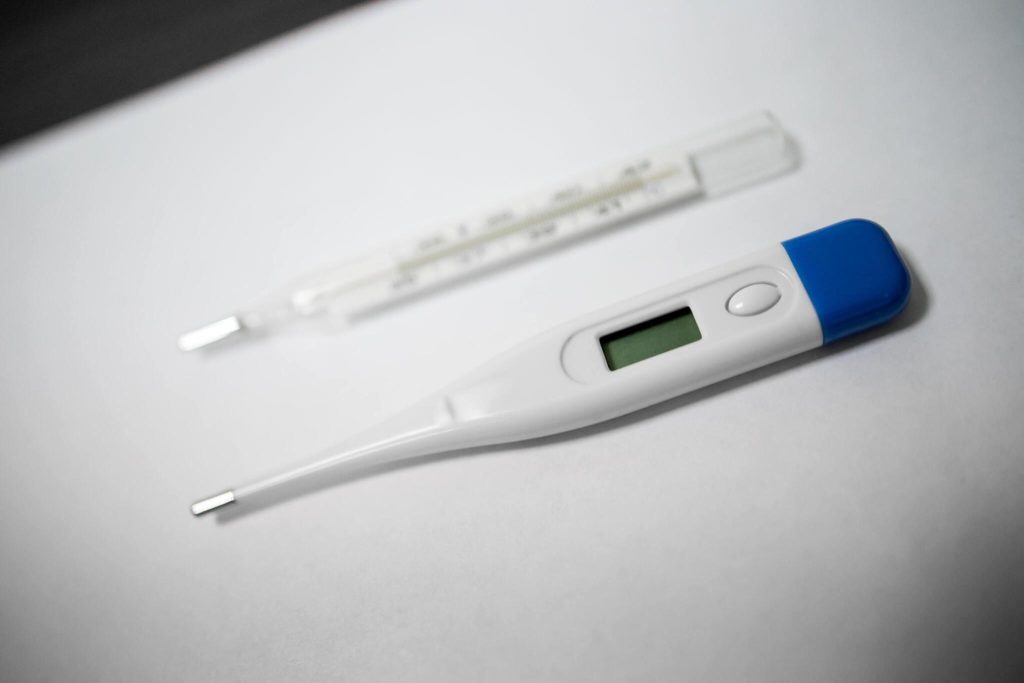If you’re trying to conceive, or are already pregnant, you might be wondering what the best thermometer to use is. Basal body temperature (BBT) charting is a method used by many women to track their ovulation cycles. A basal thermometer is a special kind of thermometer that is designed to help with this process. But what’s the main difference between a basal and regular thermometer?
But before we point out the main differences between a basal thermometer and a regular one, we need to first understand a few basic concepts. Firstly, we need to understand what basal temperature is?
What is Basal Body Temperature?
For those who are new to all this, basal body temperature is the most integral part of our lives. Basal body temperature is the body’s lowest resting temperature. It usually occurs right before you wake up in the morning. This is why basal body temperature (BBT) charting is best done first thing in the morning before you get out of bed or do anything else.
So what’s the big deal with basal body temperature? Well, for women who are trying to conceive, knowing your basal body temperature can be extremely helpful. This is because your basal body temperature changes throughout your ovulation cycle. Just before ovulation, your basal body temperature will drop slightly. Then, immediately after ovulation, it will rise and stay elevated until your next period begins.
By tracking these changes in temperature, you can get a pretty good idea of when you’re ovulating. And this is important because ovulation is when you’re most fertile. If you’re trying to get pregnant, knowing when you ovulate can help you time intercourse accordingly.
What is a Basal Thermometer?
Basal thermometers are more accurate than regular digital thermometers. They can measure tiny changes in your body temperature, as low as 0.05 degrees Celsius. This means that they can pick up on early signs of ovulation, which can be helpful if you’re trying to conceive. Tracking your ovulation cycle through a basal thermometer enables you to determine the smallest of problems in your body.
While regular digital thermometers are accurate to within 0.1 degrees Celsius, basal thermometers are even more accurate, making them the best choice for ovulation charting.

What is a Regular Thermometer?
A regular thermometer is just your average digital thermometer that you would use to check your temperature when you’re feeling sick. It is not as accurate as a basal thermometer, but it will still give you a general idea of your temperature. It doesn’t have any special features or anything like that. It’s just a simple device that measures temperature.
What’s the main difference between a Basal and a Regular Thermometer?
The Main Difference: Accuracy
The main difference between basal and regular thermometers is accuracy. Basal thermometers are much more accurate than regular digital thermometers. They can measure tiny changes in your body temperature, as low as 0.05 degrees Celsius. This means that they can pick up on early signs of ovulation, which can be helpful if you’re trying to conceive.
The second biggest question women have is how do you actually use a basal thermometer?
How do you use a basal thermometer?
Most basal thermometers are used orally, though some can also be used vaginally. If you’re using it orally, simply place the thermometer under your tongue and leave it there for about 3 minutes. If you’re using it vaginally, insert the thermometer into your vagina and leave it there for about 3 minutes.
Once the thermometer has been in place for 3 minutes, it will beep or otherwise indicate that it’s done. At this point, you can remove it and check the reading.
Record the reading on a chart or some other record-keeping system. Many basal thermometers come with pre-printed charts that you can use. Others have apps that you can download to your phone or computer.
It’s important to take your temperature at the same time each day, preferably first thing in the morning after you wake up. This will help you get the most accurate readings.
Now that you have known the difference between the two and why do you need a basal thermometer, the next big question is:
How do you choose a basal thermometer?
Well, it all comes down to your personal preference. But, we’ve put together a complete guide to help you narrow down your list of The Best Basal Thermometers of 2023.
There are a variety of basal thermometers on the market, so it can be hard to know which one is right for you. But, don’t worry, we’re here to help.
© Copyright 2024 by

